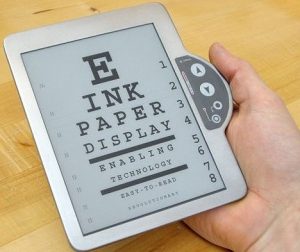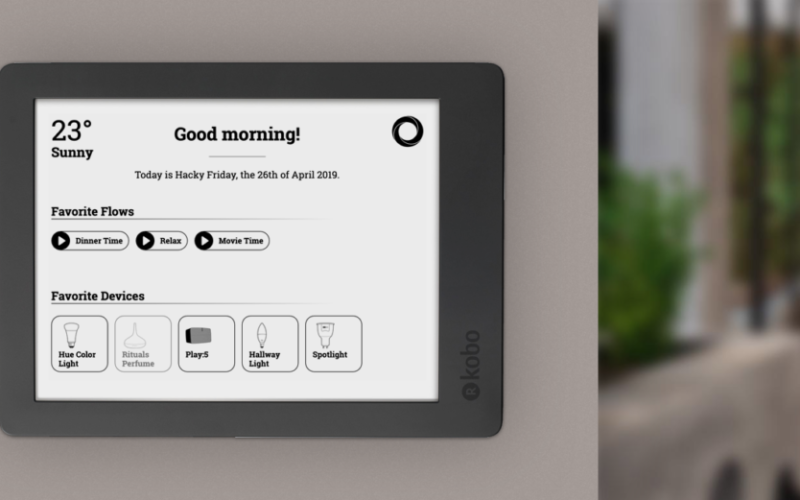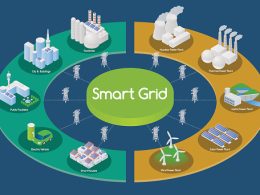Understanding the Mechanics of E-Ink Displays
E-Ink displays, also known as electronic ink displays, are a type of electronic paper technology that mimics the appearance of ink on paper. The technology behind E-Ink displays is quite fascinating. Unlike traditional LCD screens that require a backlight to illuminate the pixels, E-Ink displays use tiny microcapsules filled with positively charged white particles and negatively charged black particles. When an electric field is applied, the particles move to the top of the microcapsules, creating a visible image.
One of the key advantages of E-Ink displays is their low power consumption. Since E-Ink only requires power when the image on the screen changes, devices with E-Ink displays can last much longer on a single charge compared to devices with traditional LCD screens. This makes E-Ink displays ideal for devices that require long battery life, such as e-readers and smartwatches.
In terms of readability, E-Ink displays are also superior to LCD screens. The matte finish of E-Ink displays reduces glare and provides a more paper-like reading experience, making it easier on the eyes for extended periods of use. This is particularly beneficial for educational tools, where students may spend hours reading textbooks or taking notes on electronic devices.
Adoption of E-Ink in Educational Tools

E-Ink technology has seen a rise in adoption in educational tools due to its low power consumption and improved readability. Devices such as e-readers and tablets with E-Ink displays offer students a more comfortable reading experience, with reduced eye strain and glare compared to traditional LCD screens.
In addition to the enhanced reading experience, E-Ink displays are also more energy-efficient, allowing educational tools to last longer on a single charge. This is particularly important for students who may not have access to charging outlets throughout the day.
Furthermore, the durability of E-Ink displays makes them ideal for educational settings where devices may be subjected to rough handling. The flexible nature of E-Ink screens also allows for a more interactive learning experience, with the ability to annotate texts and diagrams directly on the screen.
E-Ink in Outdoor and Industrial Applications
E-Ink displays are not limited to educational tools; they are also finding applications in outdoor signage and industrial machinery. The durability and visibility of E-Ink displays make them ideal for outdoor settings, where traditional LCD screens may struggle to compete with sunlight and harsh weather conditions.
In industrial applications, E-Ink displays offer a reliable and energy-efficient solution for displaying critical information on machinery and equipment. The low power consumption of E-Ink displays ensures that important data can be displayed continuously without draining the device’s battery.
Overall, the versatility of E-Ink displays makes them a valuable technology for a wide range of applications beyond consumer electronics.
Customization and Flexibility of E-Ink Screens
One of the key advantages of E-Ink screens is their customization and flexibility. Users can personalize their display settings to suit their preferences, such as adjusting the font size, contrast, and brightness. This level of customization allows for a more comfortable reading experience, tailored to individual needs.
Furthermore, E-Ink screens offer flexibility for various personal gadgets, from e-readers to smartwatches. The lightweight and thin nature of E-Ink displays make them easy to integrate into a variety of devices, without compromising on performance or battery life.
Whether you prefer a larger font size for easier reading or a lower brightness setting for reduced eye strain, E-Ink screens offer a customizable and adaptable solution for a wide range of users.
Comparative Analysis of E-Ink and LCD

When comparing E-Ink displays to traditional LCD screens, several key differences become apparent. In terms of power consumption, E-Ink displays are far more energy-efficient, requiring power only when the image changes. This results in longer battery life for devices with E-Ink displays, making them ideal for portable gadgets like e-readers and smartwatches.
In addition, the readability of E-Ink displays is superior to LCD screens, thanks to the matte finish that reduces glare and provides a paper-like reading experience. This is particularly beneficial for devices used for reading, such as e-readers and tablets.
When it comes to durability, E-Ink displays also have an edge over LCD screens, as they are less prone to damage from impact or pressure. This makes E-Ink displays a reliable choice for devices that may be subjected to rough handling or outdoor use.
Innovative devices such as Kindles, e-readers, smartwatches, and tablets are benefiting from the unique advantages of E-Ink displays, offering users a more comfortable and efficient digital experience.
E-Ink’s Impact on Digital Reading Habits
E-Ink technology is revolutionizing the digital reading experience, offering users a more comfortable and paper-like reading experience. The matte finish of E-Ink displays reduces glare and eye strain, making it easier to read for extended periods of time.
Devices with E-Ink displays are also more energy-efficient, allowing users to enjoy longer battery life without sacrificing performance. This is particularly important for avid readers who may spend hours immersed in their favorite books on e-readers or tablets.
Furthermore, the customizable settings of E-Ink displays allow users to tailor their reading experience to their preferences, whether it’s adjusting the font size, contrast, or brightness. This level of customization enhances the overall reading experience and makes digital reading more enjoyable and accessible to a wider audience.
Innovative devices with E-Ink displays are enhancing personal gadgets and transforming the way we consume digital content, from e-books to newspapers and magazines.
The Future of E-Ink in Augmented Reality

As E-Ink technology continues to evolve, the future of E-Ink displays in augmented reality devices is promising. The flexibility and low power consumption of E-Ink screens make them an ideal choice for integrating into wearable AR devices, such as smart glasses or headsets.
E-Ink displays offer a more comfortable viewing experience for augmented reality applications, with reduced eye strain and improved readability. The matte finish of E-Ink screens provides a more natural and immersive visual experience, making them well-suited for AR content.
With the growing demand for wearable technology and augmented reality experiences, E-Ink displays are poised to play a significant role in shaping the future of AR devices. The combination of E-Ink technology and augmented reality has the potential to create innovative and user-friendly solutions for a wide range of industries, from gaming and entertainment to healthcare and education.
In conclusion, E-Ink displays are a versatile and innovative technology that is transforming the way we interact with digital content. From educational tools to outdoor signage and personal gadgets, E-Ink displays offer a unique combination of readability, durability, and energy efficiency that make them a valuable asset in a wide range of applications. As E-Ink technology continues to advance, the possibilities for its integration into new and exciting devices are endless, paving the way for a more immersive and user-friendly digital experience.










